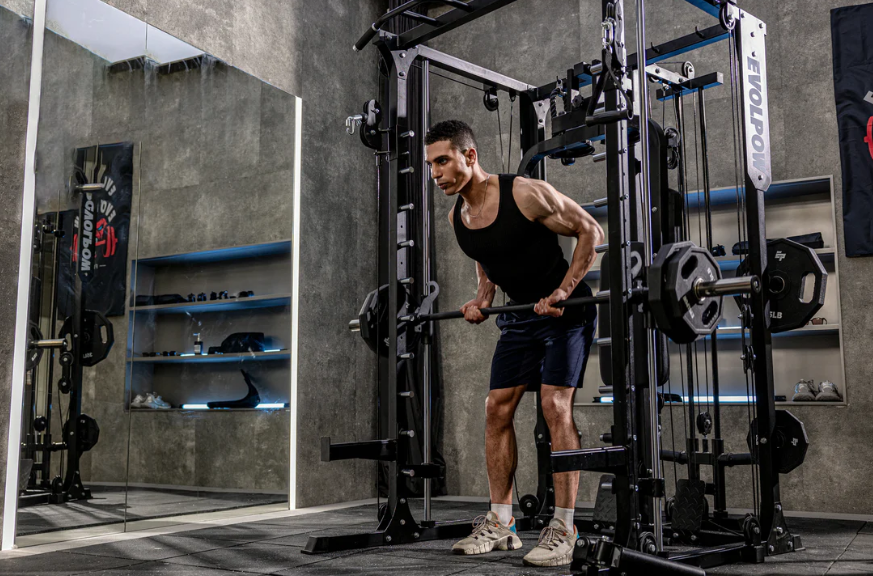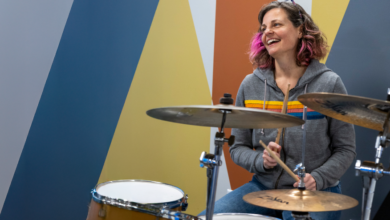In the world of fitness, building strength efficiently and safely is a top priority for athletes and gym-goers alike. One of the most effective tools in strength training is plate loaded equipment. This type of gym equipment has gained massive popularity over the years due to its durability, versatility, and ability to deliver results for users of all fitness levels. From seasoned bodybuilders to beginners working on muscle control, plate loaded equipment is a cornerstone in commercial and home gym setups.
What Is Plate Loaded Equipment?
Plate loaded equipment refers to strength training machines that use removable weight plates as resistance instead of a fixed weight stack or built-in tension system. These machines usually feature pins, sleeves, or pegs where Olympic-style weight plates can be manually loaded by the user.
This design offers the dynamic resistance of free weights with the stability and structure of a machine. Each unit typically supports a specific movement or muscle group, such as chest pressing, leg pressing, shoulder pressing, rowing, or squatting.
Why Plate Loaded Equipment Is So Popular
The rise in popularity of plate loaded equipment isn’t just a trend—it’s the result of practical benefits and consistent performance. Here’s why it’s such a sought-after training tool:
1. Realistic Resistance Curve
Unlike selectorized machines that often provide uneven resistance, plate loaded equipment delivers a more natural resistance curve. This better mimics free-weight training and ensures the muscles are activated throughout the entire range of motion.
2. Adjustability and Control
With manually added plates, users can control how much weight they lift. This adjustability is especially helpful for advanced lifters using drop sets, pyramid sets, or progressive overload methods. You’re not limited to predefined weight stacks.
3. Improved Safety
These machines offer greater support during exercises by guiding the path of movement. They help reduce the chance of injury from poor form or imbalanced lifting. This is particularly useful for those lifting heavy loads without a spotter.
4. Unilateral Training Options
Many plate loaded equipment designs have independent arms or legs, which allow users to train one side at a time. This is vital for correcting muscle imbalances and developing equal strength across both sides of the body.
5. Durability and Low Maintenance
With minimal moving parts and no cables or pulleys, plate loaded equipment is built to last. It requires less maintenance than pin-loaded machines, making it a smart investment for commercial gyms and private fitness studios.
See also: Text to Image in Storytelling: Breathing Life Into Words
Types of Plate Loaded Equipment and Targeted Muscles
To understand the versatility of Plate Loaded Equipment here are several types and their specific uses:
- Leg Press Machine
Focuses on quads, glutes, hamstrings, and calves. Enables users to move heavy loads without compromising spinal health. - Chest Press Machine
Targets the pectoral muscles, deltoids, and triceps. Mimics the bench press with improved control and stability. - Lat Pulldown Machine
Works the latissimus dorsi, biceps, and upper back. Ideal for improving vertical pulling strength. - Seated Row Machine
Hits the rhomboids, trapezius, and rear delts. Encourages proper posture and back engagement. - Shoulder Press Machine
Trains the deltoids and upper traps. A great alternative to overhead barbell pressing. - Hack Squat Machine
Engages the quads and glutes. Offers a secure platform for heavy lower-body training without the risks associated with barbell squats.
Benefits for Different Types of Users
One of the strengths of plate loaded equipment is its universal appeal. It benefits a wide range of users with varying goals:
- Beginners: Provides a secure and guided way to learn movements while building foundational strength.
- Bodybuilders: Allows for muscle isolation and targeted hypertrophy.
- Athletes: Supports strength development in a controlled and effective manner, aiding performance.
- Rehabilitation Patients: Offers low-risk movement patterns for injury recovery and joint protection.
- Home Gym Owners: Combines functionality with compact design options.
Creating a Plate Loaded Equipment Workout Routine
For those interested in creating a balanced workout using plate loaded equipment, here’s a sample full-body weekly routine:
Day 1 – Upper Body Push
- Chest Press – 4 sets of 10 reps
- Shoulder Press – 3 sets of 10 reps
- Incline Chest Press – 3 sets of 12 reps
- Triceps Extension – 3 sets of 15 reps
Day 2 – Lower Body
- Leg Press – 4 sets of 12 reps
- Hack Squat – 3 sets of 10 reps
- Leg Curl – 3 sets of 15 reps
- Calf Raise – 4 sets of 20 reps
Day 3 – Upper Body Pull
- Lat Pulldown – 4 sets of 10 reps
- Seated Row – 3 sets of 12 reps
- Bicep Curl – 3 sets of 15 reps
- Rear Delt Row – 3 sets of 12 reps
This workout routine is excellent for hypertrophy and muscle balance and relies entirely on plate loaded equipment.
Tips for Using Plate Loaded Equipment Effectively
To maximize the results and minimize risk, here are some pro tips for using this type of equipment:
- Warm Up Properly
Begin each session with a warm-up using lighter weights to get blood flowing and prepare your joints. - Use Full Range of Motion
Avoid short, jerky movements. Full extension and contraction help in better muscle recruitment. - Load Smart
Don’t overload the machine beyond your capability. Start light, focus on form, and gradually add weight. - Wipe and Inspect Equipment
Especially in commercial gyms, always check the machine before use and wipe it down after. - Pair with Free Weights
For a well-rounded workout, combine plate loaded equipment with free weights to improve stabilizer muscle strength.
Choosing Plate Loaded Equipment for Home Gyms
When selecting plate loaded equipment for your home, consider:
- Available Space: Some machines can be large. Measure your gym space beforehand.
- Machine Versatility: Look for machines that support multiple exercises.
- Weight Plate Compatibility: Make sure the machine works with standard Olympic plates.
- Build Quality: Choose brands known for sturdy construction and ergonomic design.
Good starter machines for home use include a leg press/hack squat combo, a chest press, and a lat pulldown/row combo.
Final Thoughts
Plate loaded equipment is more than just a training tool—it’s a foundation for safe, scalable, and effective strength development. Its unique combination of mechanical guidance and customizable resistance makes it ideal for building muscle mass, improving form, and advancing toward long-term fitness goals.
Whether you’re setting up a gym, expanding your current equipment, or upgrading your personal workouts, investing in plate loaded equipment is a decision that supports strength, safety, and serious results.





